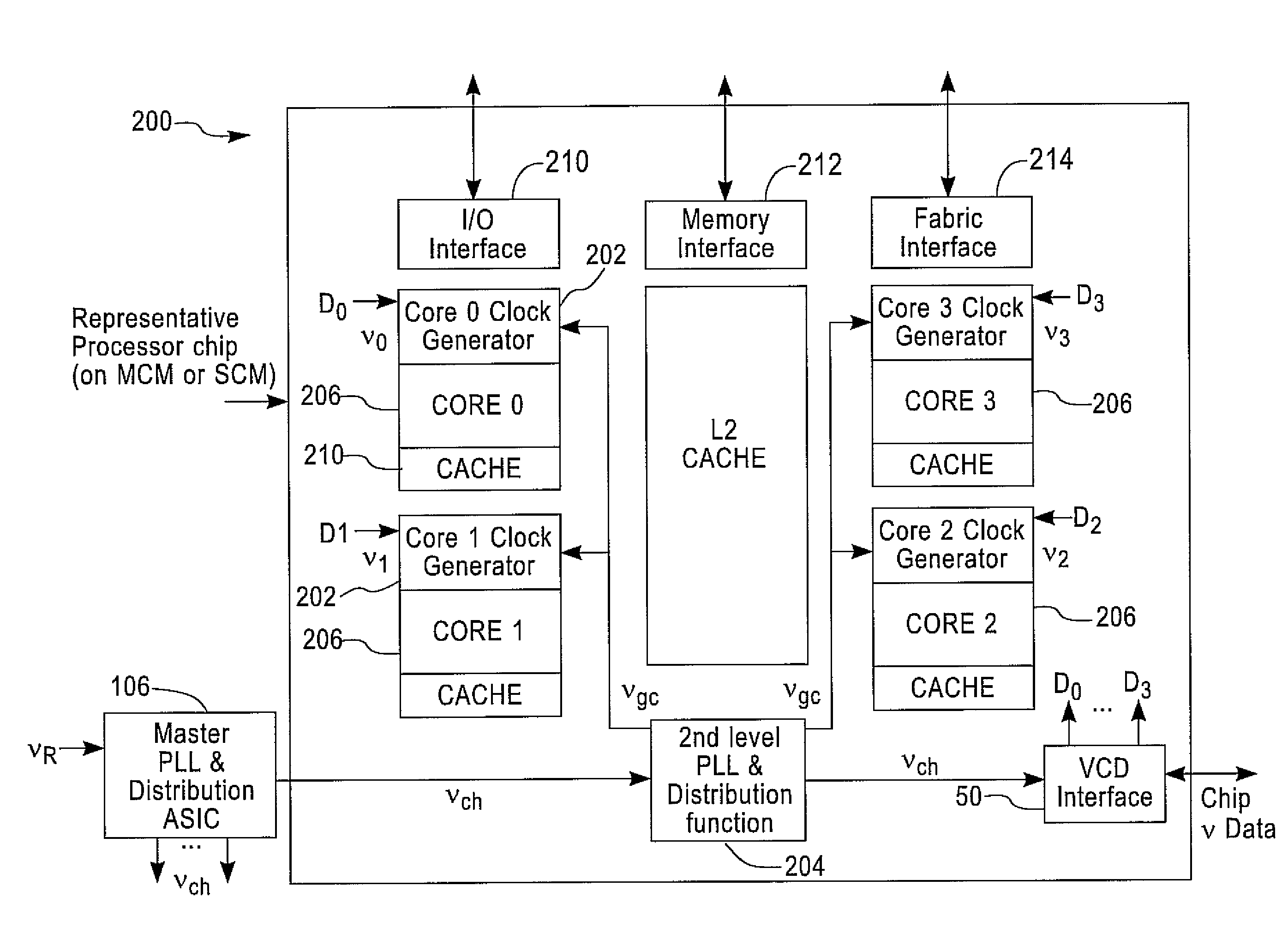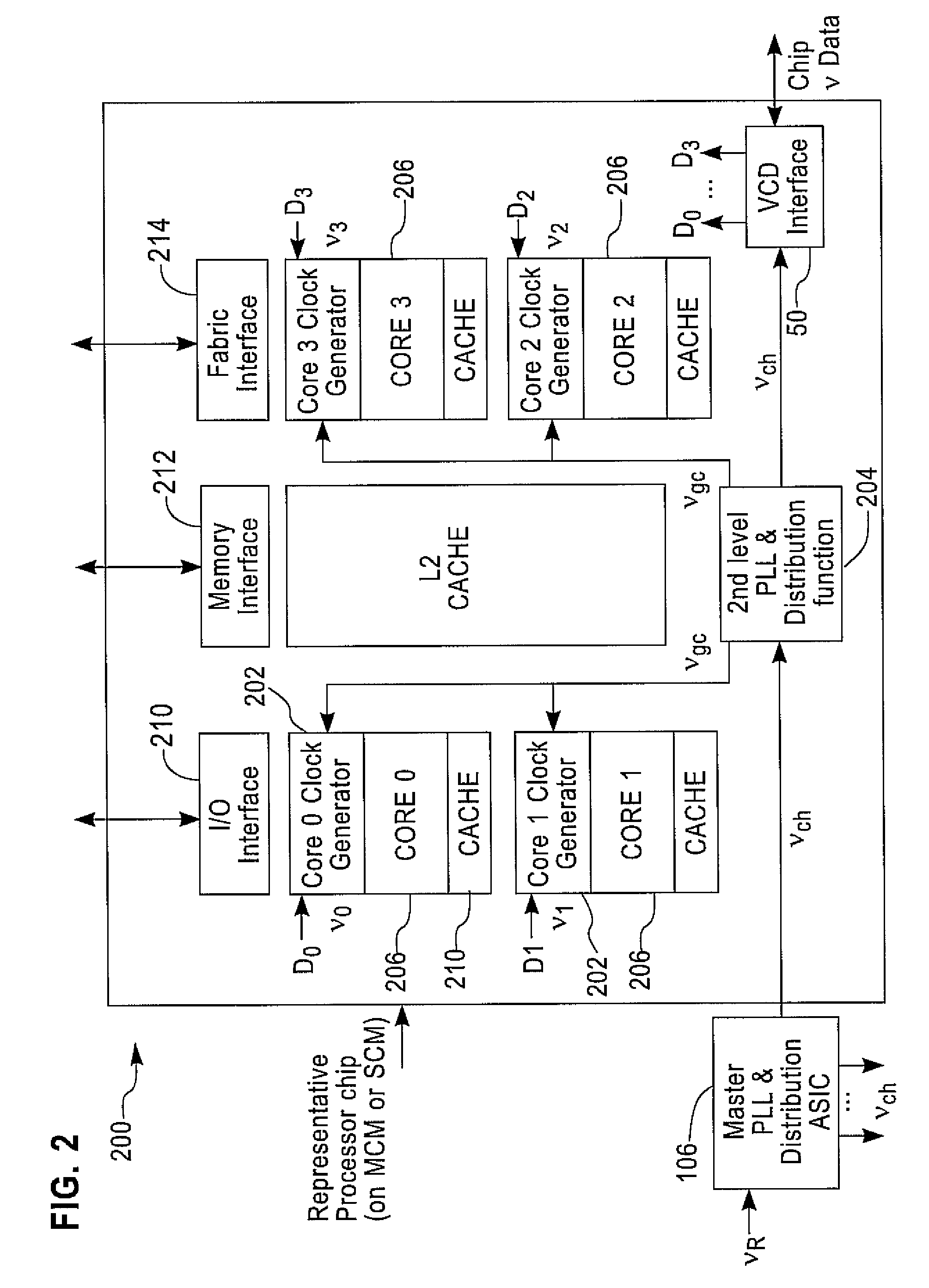Method and system for analog frequency clocking in processor cores
a processor core and frequency clock technology, applied in the field of data processing systems, can solve the problems of inability to maintain a long-term strategy, inability to transmit high-frequency clocks (>5-10 ghz) for multiple chips comprised of multiple cores, and limited scalability of techniques, so as to minimize latency and achieve the net performance gain of operating each cor
- Summary
- Abstract
- Description
- Claims
- Application Information
AI Technical Summary
Benefits of technology
Problems solved by technology
Method used
Image
Examples
Embodiment Construction
[0023]FIG. 1 illustrates a typical computing Server 100 that is composed of multiple microprocessor (uP) chips (N) 102 which has internal clocking functions (e.g. digital signal processor, DSP, core clock generator, etc.) that utilize the server reference oscillator (vR) as the basic system clock. A Master PLL and distribution ASIC (Application Specific Integrated Circuit) on the MCM or system board multiplies, re-drives, and distributes the reference clock signal to each uP chip in the Multi-chip Module (MCM) or system board. The output of the Master PLL & Distribution ASIC is a chip clock signal (vch) that is distributed throughout the processor chip.
[0024]The reference oscillator 104 clock frequency (νR) is a relatively low frequency (typically 10-100 MHz) such that it can be easily routed throughout the PC board without significant signal degradation yet fast enough to enable feasible up-conversions rates to insure the uP high speed clock (typically 5-10 GHz) is stable and remai...
PUM
 Login to View More
Login to View More Abstract
Description
Claims
Application Information
 Login to View More
Login to View More - R&D
- Intellectual Property
- Life Sciences
- Materials
- Tech Scout
- Unparalleled Data Quality
- Higher Quality Content
- 60% Fewer Hallucinations
Browse by: Latest US Patents, China's latest patents, Technical Efficacy Thesaurus, Application Domain, Technology Topic, Popular Technical Reports.
© 2025 PatSnap. All rights reserved.Legal|Privacy policy|Modern Slavery Act Transparency Statement|Sitemap|About US| Contact US: help@patsnap.com



